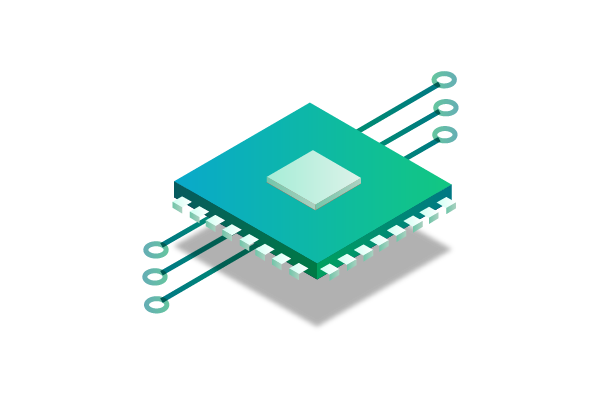Money is an essential part of our daily lives, serving as a means to buy goods and services, save for the future, and invest in various assets. But have you ever stopped to think about what gives money its value and why we readily accept it as a medium of exchange? To answer these questions, let’s start by understanding what a fiat currency is. A fiat currency is money that doesn’t have intrinsic value like gold or silver; instead, its value is based on trust and government authority. It’s essentially a piece of paper or a digital record, but it holds immense importance in modern economies.
In our exploration of the foundation of modern economies and the implications of fiat currency, we’ll delve into how governments manage and control their currencies. You’ll discover how central banks play a pivotal role in regulating the money supply, influencing interest rates, and stabilizing economies. We’ll also explore the advantages and challenges associated with fiat currency, including inflation and the potential for economic crises. By the end of this journey, you’ll have a clearer understanding of why fiat currency is so integral to our economic systems and daily lives. So, let’s dive in and uncover the intriguing world of money and its value.
What is Fiat Currency?

At its core, a fiat currency is a type of money that derives its value from the trust and confidence of the people who use it, rather than from any physical commodity backing it, such as gold or silver. In other words, the value of fiat currency is not tied to the intrinsic worth of the material it’s made of but is based on the belief that it can be exchanged for goods and services.
Historically, various forms of money were used, including commodities like shells, cattle, or precious metals. However, as economies evolved and expanded, the limitations of commodity-based money became apparent. Fiat currency emerged as a solution to these limitations, offering greater flexibility and adaptability to the changing needs of modern societies.
The Role of Central Banks

Central banks play a pivotal and multifaceted role in modern economies, exerting significant influence over the issuance and management of fiat currency. Their primary mandate is to maintain monetary stability, which encompasses a range of responsibilities crucial for the overall health of an economy. Here, we will delve deeper into the various facets of their role.
Regulating the Money Supply
Central banks are tasked with carefully managing the money supply within their respective countries. This involves monitoring and adjusting the quantity of money in circulation to achieve specific economic objectives. By controlling the money supply, they aim to balance the sometimes-conflicting goals of price stability and economic growth.
Controlling Inflation
One of the most crucial functions of central banks is to combat inflation. Inflation, or the sustained increase in the general price level of goods and services, can erode the purchasing power of a nation’s currency. Central banks employ various tools, including setting interest rates, to curb inflation and keep it within a target range. This is vital to prevent excessive price increases that can harm consumers and businesses.
Also Read: What Is Asset Tokenization? Converting Real Assets into Digital Assets for Beginners
Maintaining Financial Stability
Central banks act as guardians of the financial system’s stability. They supervise and regulate commercial banks and financial institutions to ensure their soundness and prevent systemic crises. This oversight helps mitigate risks and safeguards the overall health of the banking sector.
Monetary Policy
Central banks implement monetary policy by manipulating key interest rates, such as the federal funds rate in the United States or the repo rate in India. These policy rates influence borrowing and lending rates throughout the economy, affecting consumer spending, business investments, and overall economic activity. Central banks use these levers to achieve their monetary policy objectives.
Open Market Operations
Central banks conduct open market operations by buying or selling government securities in the open market. These transactions have a direct impact on the money supply and interest rates. For example, purchasing government bonds injects money into the financial system, lowering interest rates and encouraging borrowing and spending.
Currency Issuance
Central banks are the sole authority responsible for issuing and distributing the nation’s currency. They oversee the design, production, and distribution of banknotes and coins. This ensures the integrity and security of the currency, guarding against counterfeiting and fraud.
Emergency Measures
In times of economic crisis, central banks have the unique power to create money “out of thin air.” This process, often referred to as “money printing,” allows central banks to respond swiftly to financial turmoil, stimulate economic growth, or provide liquidity to distressed markets. However, this extraordinary power must be wielded judiciously to prevent the risk of hyperinflation and maintain public confidence in the currency.
Central banks are the linchpin of modern monetary systems, wielding substantial authority over fiat currency issuance and management. Their ability to influence interest rates, control the money supply, and regulate financial institutions plays a pivotal role in shaping economic outcomes and ensuring the stability of financial systems. Balancing these responsibilities effectively is a delicate task that requires a deep understanding of economic dynamics and prudent decision-making.
Implications of Fiat Currency

The widespread use of fiat currency has far-reaching implications for economies, governments, and individuals. One of the most significant advantages is flexibility. Unlike commodity-based money, fiat currency can be easily adjusted to meet changing economic conditions. Central banks can inject liquidity during economic downturns or reduce the money supply to combat inflation.
However, this flexibility also comes with challenges. Fiat currency is susceptible to inflation, which erodes its purchasing power over time. Individuals and businesses must carefully manage their finances and investments to mitigate the effects of inflation and ensure their wealth is preserved. In addition to the advantages and challenges mentioned, there are several other important implications of fiat currency that deserve consideration:
Government Control
Fiat currencies are typically issued and regulated by a central authority, such as a government or central bank. This means that these institutions have significant control over the money supply, interest rates, and monetary policy. While this control can be used to stabilize the economy, it also raises concerns about potential misuse of power or political interference in financial matters.
Exchange Rates
In a global economy, the value of a fiat currency can fluctuate in foreign exchange markets. These fluctuations can have a profound impact on international trade and investment. A strong currency can make exports more expensive and imports cheaper, potentially affecting a nation’s trade balance and economic competitiveness.
Financial Stability
The ability to print money at will can be a double-edged sword. While it allows governments to respond to financial crises and provide economic stimulus, excessive money printing can lead to hyperinflation, as witnessed in cases like Zimbabwe and Venezuela. Maintaining financial stability while using fiat currency requires responsible fiscal and monetary policies.
Savings and Investments
Individuals who save and invest in fiat currency need to consider the risk of inflation and the impact on their purchasing power over time. To preserve and grow their wealth, people often turn to various investment options, such as stocks, bonds, real estate, or precious metals, to potentially outpace inflation.
Financial Inclusion
The use of fiat currency can either promote or hinder financial inclusion, depending on a country’s policies and infrastructure. Access to banking services and digital payment methods can help individuals participate more fully in the formal economy, while cash-based societies may leave many excluded.
Security and Fraud
The digital nature of modern fiat currency, often transacted electronically, brings concerns about cybersecurity and fraud. Individuals and businesses must be vigilant to protect their financial assets from hacking, phishing, and other cyber threats.
Monetary Policy Transparency
Transparency in monetary policy decisions is crucial for maintaining public trust in the currency and the institutions that govern it. Central banks often communicate their objectives and decisions to the public to provide clarity and build confidence in the currency’s stability.
Impact on Interest Rates
Central banks can influence interest rates to manage economic conditions. Lowering interest rates can stimulate borrowing and spending, while raising rates can help control inflation. The impact of these interest rate changes can affect savers, borrowers, and the overall economy.
Fiat Currency in a Digital Age
The transition to a digital age for fiat currency has been accelerated by the increasing popularity of cryptocurrencies and digital payment systems. These technological advancements have started to reshape the way we perceive and use traditional cash. In response to these changes, governments and central banks worldwide are actively exploring the concept of central bank digital currencies (CBDCs) as a means to adapt to this new financial landscape.
CBDCs represent a fusion of the tried-and-true features of conventional fiat currency with the efficiency, security, and convenience offered by digital technology. The potential benefits of CBDCs are vast and encompass various aspects of the financial ecosystem. One of the most promising aspects is the potential for greater financial inclusion. CBDCs could offer people who have limited access to traditional banking services the opportunity to participate more fully in the digital economy.
Moreover, CBDCs can substantially reduce transaction costs by streamlining payment processes, eliminating intermediaries, and minimizing the need for physical cash handling. This efficiency can have significant implications for cross-border transactions, making international commerce more accessible and cost-effective.
Additionally, CBDCs have the potential to enhance transparency within the financial system. The blockchain technology often underpinning CBDCs can provide a tamper-resistant ledger of all transactions, allowing for more efficient tracking and auditing of financial activities. This transparency can help combat fraud, money laundering, and other illicit financial activities.
However, the implementation of CBDCs is not without its challenges and concerns. Privacy is a major issue, as the use of digital currency could mean that individuals’ financial transactions are more easily traceable by authorities. Balancing the benefits of transparency with the need for individual privacy is a delicate task for policymakers.
Cybersecurity is another critical concern, as CBDCs could become prime targets for hackers and cybercriminals. Ensuring the security of the digital infrastructure and the protection of individuals’ funds will be paramount.
The Future of Fiat Currency
In the ever-progressing 21st century, the future of fiat currency is a hot topic. You might be wondering, “What is a fiat currency?” Well, it’s basically money issued by governments that isn’t backed by physical assets like gold or silver. Instead, it relies on trust in the government’s authority and the central bank’s ability to manage it. As we delve deeper into this discussion, we see that it’s not just about printed bills and coins anymore.
Also Read: What is Crypto Market Sentiment?
The ongoing debate revolves around the roles of government, central banks, and technology in shaping the future of money. With the rise of digital currencies and blockchain technology, the landscape of finance is changing rapidly. Governments and central banks are considering digital versions of their currencies, while cryptocurrencies like Bitcoin and Ethereum are gaining popularity. The choices made in this arena will have far-reaching consequences for the global economy and society at large.
It’s crucial to recognize that the decisions made regarding the future of fiat currency go beyond just the economic realm. They touch on questions of privacy, security, and financial inclusion. As we navigate this complex landscape, it’s clear that the future of money is still unfolding, and it’s a topic that will continue to evolve in the years to come.
Conclusion
Fiat currency, in essence, is the backbone of modern economies. At its core, you might wonder, “What is a fiat currency?” Well, it’s money that isn’t backed by physical assets like gold or silver. Instead, its worth is built upon the trust and confidence of the people who use it. Central banks, like the Federal Reserve in the United States, have a pivotal role in managing fiat currency. They work to keep it stable and adaptable to the ever-changing economic landscape.
Now, let’s delve into the broader implications. Fiat currency is more than just bills and coins; it’s the glue holding our financial world together. Its impact extends from ensuring economic stability to shaping individual financial strategies. But as we move further into the digital age, the future of fiat currency is anything but certain. Innovations like Central Bank Digital Currencies (CBDCs) are transforming the monetary landscape, offering both opportunities and challenges. As we look ahead, understanding the fundamentals of fiat currency becomes increasingly crucial for individuals, businesses, and policymakers. They hold the key to shaping the monetary systems of tomorrow, where trust and adaptability will remain paramount.
Disclaimer: The information provided by HeLa Labs in this article is intended for general informational purposes and does not reflect the company’s opinion. It is not intended as investment advice or recommendations. Readers are strongly advised to conduct their own thorough research and consult with a qualified financial advisor before making any financial decisions.

Joshua Soriano
I am Joshua Soriano, a passionate writer and devoted layer 1 and crypto enthusiast. Armed with a profound grasp of cryptocurrencies, blockchain technology, and layer 1 solutions, I've carved a niche for myself in the crypto community.
- Joshua Soriano#molongui-disabled-link
- Joshua Soriano#molongui-disabled-link
- Joshua Soriano#molongui-disabled-link
- Joshua Soriano#molongui-disabled-link

